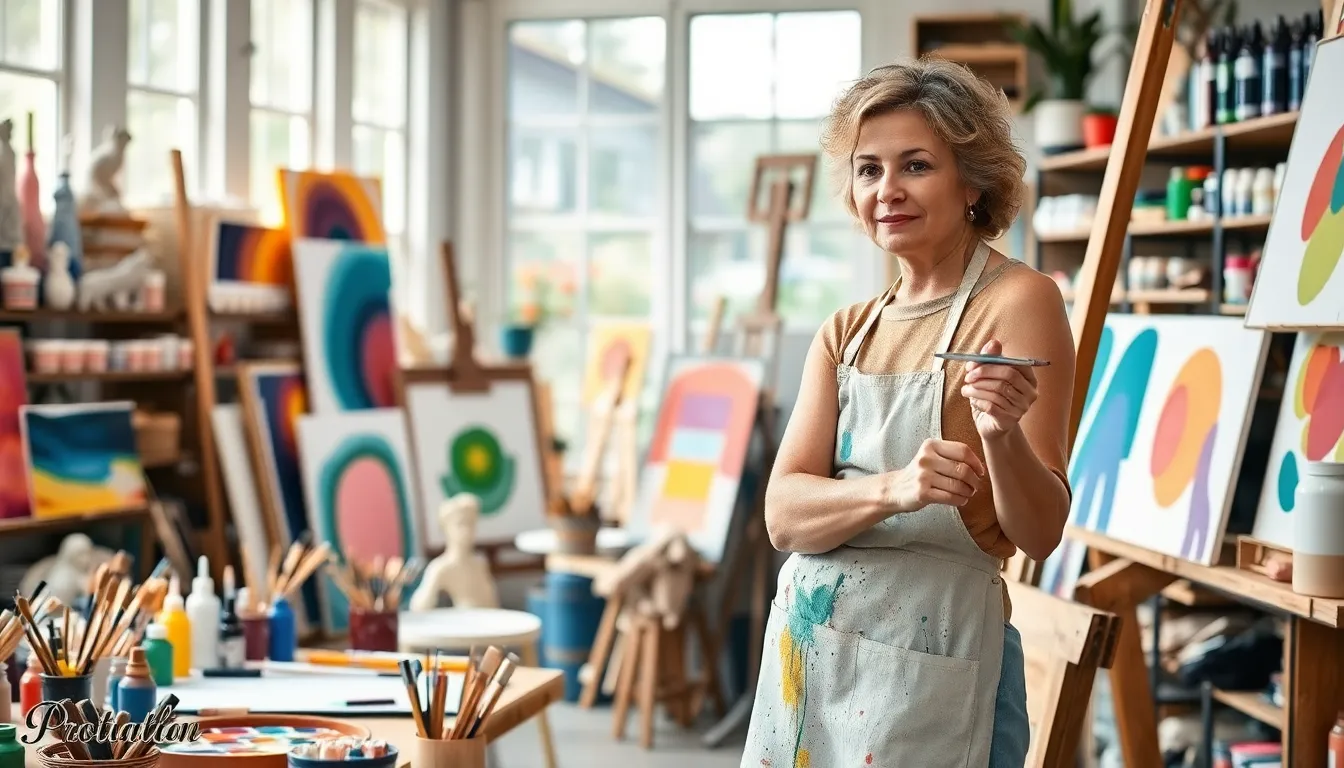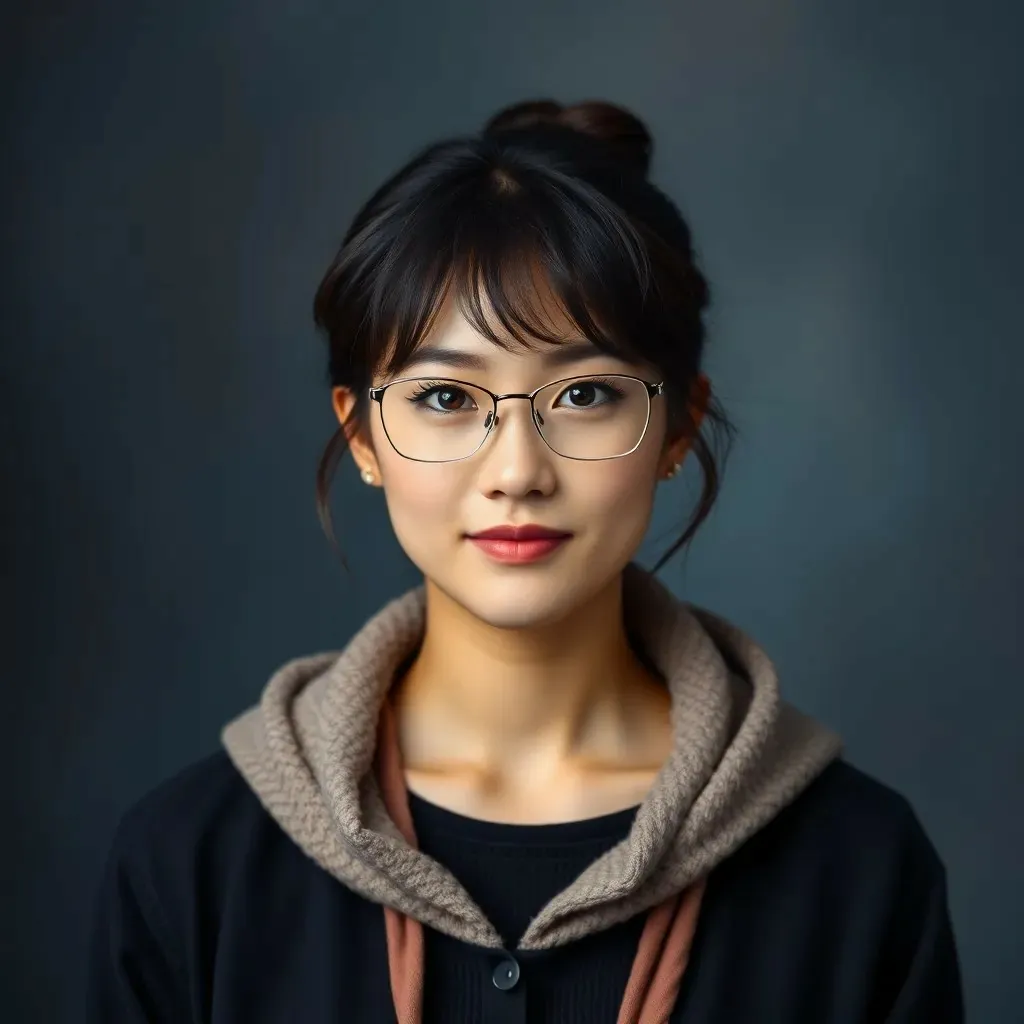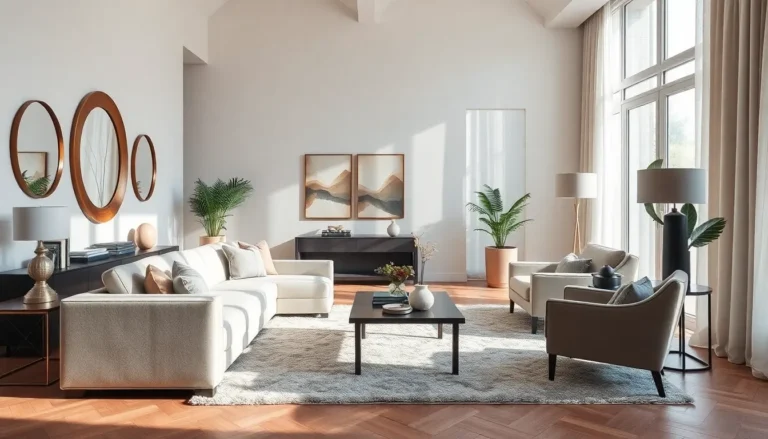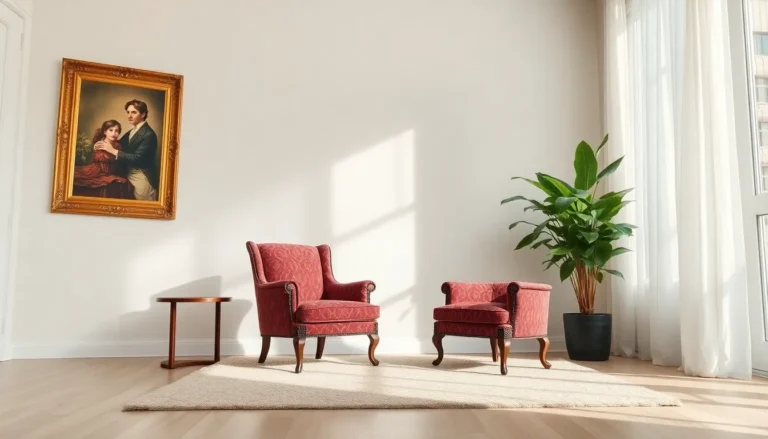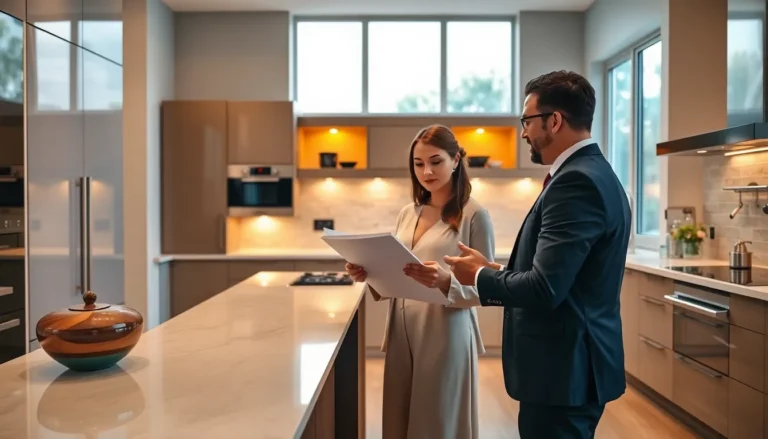Artistic design concepts are like the secret sauce that transforms the ordinary into the extraordinary. Imagine walking into a room where every color, shape, and texture dances in harmony, whispering sweet nothings to your creative soul. That’s the magic of artistic design—it’s not just about making things pretty; it’s about telling a story that captivates and engages.
Whether you’re a budding artist or a seasoned designer, understanding these concepts can elevate your work from “meh” to “wow!” It’s all about breaking the rules while knowing when to follow them. So grab your paintbrush or your digital tablet, and let’s dive into a world where creativity knows no bounds. After all, who wouldn’t want to unleash their inner Picasso while keeping a straight face?
Table of Contents
ToggleOverview of Artistic Design Concepts
Artistic design concepts encompass various elements that shape visual experiences. Color serves as a fundamental aspect, influencing emotions and setting tones within a space. Shapes contribute to the overall aesthetics, guiding the viewer’s eye and creating flow.
Texture adds depth and interest, inviting interaction and enhancing tactile experiences. Patterns intertwine with these elements, creating visual rhythm and harmony that engage the audience. Each design concept interacts with others, forming a cohesive narrative.
Balance is essential in artistic design. It achieves visual stability through symmetrical or asymmetrical arrangements. Proportion governs the relationship among different elements, ensuring they complement rather than overwhelm each other.
Unity in design fosters a sense of completeness. Incorporating similar styles or themes throughout a project unifies diverse components, enhancing clarity and focus. Contrast introduces variation, highlighting key features and drawing attention to specific areas.
Emphasizing functionality matters as much as aesthetics. Practicality ensures that designs serve the intended purpose, contributing to user satisfaction. Thoughtful integration of artistic concepts can transform utilitarian objects into striking pieces.
Artists often explore the boundaries of these designs. Innovatively challenging traditional norms encourages creativity and invites new perspectives. By understanding these principles, individuals can better express their vision and elevate their projects.
Exploration of artistic design concepts opens a world of possibilities. Engaging with these principles allows for the creation of captivating experiences that resonate deeply with audiences. Each project presents an opportunity to apply these concepts uniquely, reflecting individual artistry and intent.
Key Principles of Artistic Design
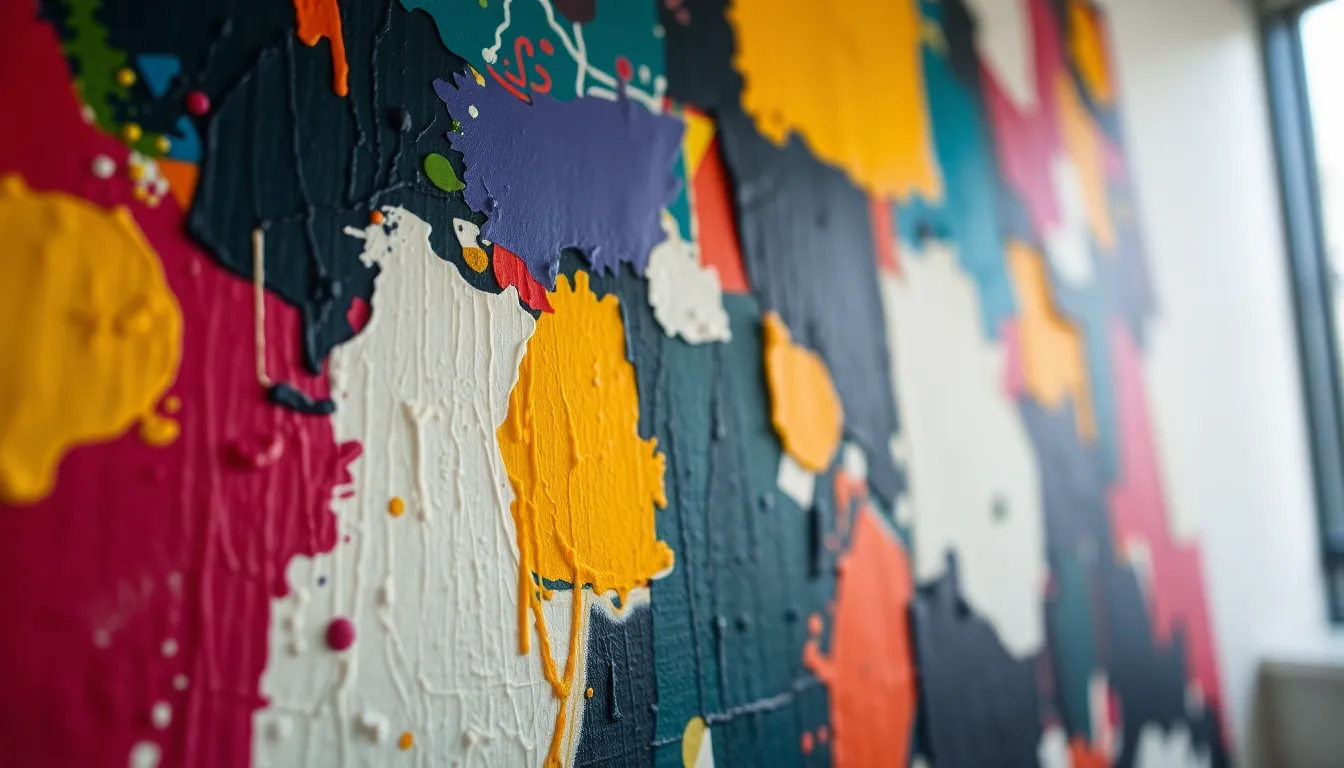
Artistic design relies on several key principles that guide creators in crafting compelling visuals. These principles create balance, unity, contrast, and emphasis, all crucial for enhancing the viewer’s experience.
Balance in Design
Balance ensures visual stability in a composition. It can manifest through symmetrical arrangements, where elements mirror each other, or asymmetrical layouts, which distribute weight unevenly yet maintain equilibrium. Artists often consider how elements relate proportionally, creating a cohesive design that feels intentional. Achieving balance draws the viewer’s eye across the piece, encouraging exploration and interaction. By using scale and positioning thoughtfully, designs can evoke a specific mood or feeling, making balance essential for impactful artwork.
Unity and Harmony
Unity and harmony weave elements together, creating a visually coherent whole. Several components contribute to this concept, such as color schemes and recurring shapes. Artists often use similar tones and materials to ensure elements work harmoniously, fostering a sense of belonging within the piece. When all components align, it generates a pleasing aesthetic that resonates with viewers. Unity also involves guiding the audience’s focus through intentional arrangement, enhancing overall appreciation of the artwork. A unified design communicates a clear message, allowing individual elements to collaborate effectively.
Contrast and Emphasis
Contrast and emphasis highlight key elements within a design, capturing viewer attention. By juxtaposing light and dark colors, artists create dynamic visuals that command focus. Emphasis often occurs through scale, positioning, or unique characteristics that differentiate elements. For instance, a large central figure surrounded by smaller components can draw immediate attention. Artists typically employ contrast to guide viewers through compositions, directing attention to important details. Utilizing these strategies allows for storytelling within design, as viewers discern relationships and narratives embedded in the artwork.
Types of Artistic Design Concepts
Artistic design encompasses numerous concepts, each serving a distinct purpose in enhancing visual communication and user experience. Below are key types that illustrate the breadth of artistic design.
Visual Arts
Visual arts include mediums such as painting, sculpture, photography, and installation art. They engage viewers’ senses through color palettes, compositions, and textures. Artists express emotions and narratives using various techniques, from brush strokes to mixed media. These elements interact to create immersive experiences. For example, a vibrant painting can evoke joy, while a monochromatic sculpture may bring a sense of calm. Choices in materials also contribute significantly, impacting both aesthetic and tactile experiences.
Graphic Design
Graphic design involves combining text and imagery to convey messages effectively. It serves diverse fields, including advertising, branding, and digital media. Designers utilize typography, layout, and color schemes to enhance communication. Each design choice can influence audience perception and engagement. For instance, bold typography can demand attention, while soft colors might create an inviting atmosphere. Designers tailor composition techniques to maintain visual hierarchy, ensuring essential information stands out. Emphasis on functionality alongside aesthetics is crucial for creating user-friendly interfaces that resonate with target audiences.
Product Design
Product design focuses on creating functional items that meet user needs. It encompasses industrial design, furniture design, and consumer electronics. Designers prioritize usability and aesthetics, ensuring products are not only appealing but also easy to use. A well-designed product relies on ergonomics and materials to enhance user experience. For example, a smartphone with an intuitive interface and sleek design attracts customers. Thorough research into market trends informs design decisions, aligning products with consumer expectations. Iterative prototyping allows designers to refine concepts and address potential issues before final production.
The Role of Color in Artistic Design
Color plays a pivotal role in artistic design. It shapes experiences and influences emotions within a space.
Color Theory
Color theory is essential for understanding how colors interact. Artists utilize the color wheel to identify primary, secondary, and tertiary colors. Complementary colors create contrast, while analogous colors provide harmony. Understanding these relationships allows for effective color combinations that enhance visual appeal. Designers often blend colors to evoke specific themes or moods. Moreover, applying color schemes consistently fosters coherence in artwork. The theory serves as a foundation for making strategic color decisions across various design mediums.
Color Psychology
Color psychology examines how colors impact emotions and behavior. For instance, blue can evoke calmness, while red often stimulates energy and excitement. Artists leverage these associations to communicate messages intentionally. Green frequently signifies growth and renewal, making it popular in nature-themed designs. Understanding audience perception is vital for designers aiming to evoke specific feelings through their work. Integrating color psychology into design choices enhances engagement and connection with viewers. Ultimately, the effective use of color can transform the overall experience of artistic projects.
Real-World Applications of Artistic Design Concepts
Artistic design concepts find expression in various fields. Their applications significantly enhance functionality and aesthetics across multiple domains.
Home Decor
Home decor showcases the influence of artistic design concepts through color and texture. Designers strategically use hues to evoke emotions, setting a desired atmosphere. Various shapes incorporated into furniture and layout create visual flow, making spaces feel inviting. Textures add depth, inviting residents and guests to interact with their surroundings. Harmonizing patterns across textiles and surfaces establishes a cohesive narrative in a room. Elements work together to reflect personal style while ensuring comfort and usability.
Advertising and Branding
Advertising and branding rely heavily on artistic design concepts to capture audience attention. Visual appeal plays a crucial role, as brands employ striking colors to evoke specific emotions. Logos designed with thoughtful shapes communicate brand identity effectively. Typography choices enhance readability, ensuring messages resonate clearly. Balance in design creates visual hierarchy, guiding viewers toward essential information. Well-executed artistic concepts help brands foster connections with their target audience, elevating their visibility in a competitive market.
Artistic design concepts serve as a powerful tool for transformation in various fields. By understanding and applying principles such as color, shape, and texture, creators can craft experiences that resonate on multiple levels. The thoughtful integration of these elements not only enhances aesthetics but also elevates functionality, ensuring a harmonious balance that captivates audiences.
Encouraging exploration and experimentation allows artists to break conventions and discover their unique voice. Embracing these concepts opens doors to endless possibilities, empowering individuals to create environments that inspire and engage. Each artistic endeavor holds the potential to tell a story and evoke emotions, making the journey of design a truly rewarding experience.

